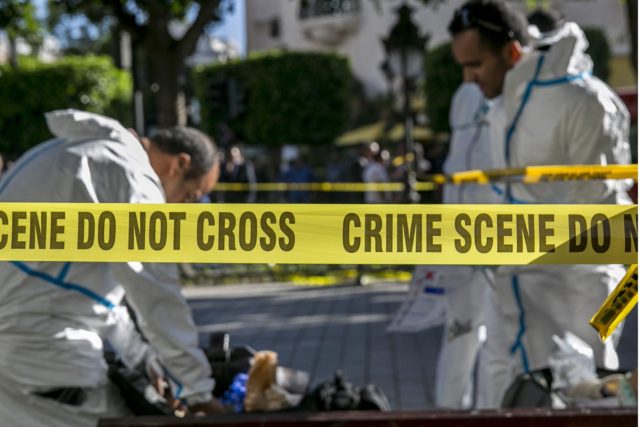
Briefs
Publication: Terrorism Monitor Volume: 16 Issue: 21

Islamic State Holding on to Hajin
Brian M. Perkins
Islamic State (IS) has seen a significant decline in the past year, with its territory and operations significantly reduced to small pockets in Syria and Iraq. The group, however, is still holding strong to portions of Syria just east of the Euphrates. In fact, the group has managed to recapture some of its key territory in eastern Syria over the past several weeks. On September 10, the U.S.-backed Syrian Defense Forces (SDF) launched a major offensive against the group in the Hajin area of eastern Syria—one of IS’s last remaining and strongest holdouts—but has since lost any of the momentum it had gained.
IS has reportedly capitalized recently on multiple sandstorms and their knowledge of the terrain to launch major counteroffensives against the SDF, effectively recapturing all of the territory in Hajin that the SDF had cleared since the operation began in September. According to some estimates, IS killed as many as 68 SDF members in the past week while around 100 others have fled (Kurdistan24, October 27).
The Hajin area is one of the group’s last major strongholds and it is seemingly going to be more difficult than expected to prevent IS from regaining ground in the surrounding areas—let alone to liberate Hajin. By some estimates, IS still has thousands of fighters in the area and has constructed a network of tunnels to evade detection by aircraft and escape the offensive while simultaneously conducting suicide attacks against the SDF and allied forces (Al Arabiya, October 27).
The SDF temporarily withdrew toward the Iraqi border while it awaited hundreds of reinforcements comprised of SDF “special forces” and members of the People’s Protection Units (YPG). Meanwhile, the Iraqi military was alerted to IS’s gains in the area and quickly deployed hundreds of troops to reinforce the border near and prevent any potential cross-border incursions by IS. According to Iraqi Brigadier General Rasool, the military has reinforced border fences, installed thermal cameras, and are preparing for airstrikes against IS (Kurdistan24, November 1). The Iraqi Army has also reportedly been joined by thousands of members of the Iran-backed Hashd al-Shaabi (Popular Mobilization Forces).
IS’s successful counteroffensive is not a sign of a significant resurgence but serves as a reminder of the group’s resilience and how quickly SDF gains can be lost. The concern now is whether or not the SDF and its cobbled-together forces can—or is willing to—withstand further counteroffensives and prevent IS from retreating into unsecured areas near Hajin or somehow find a way across the Iraqi border.
***
Tunis Bombing a Worrisome Sign for Country’s Security
Brian M. Perkins
A Tunisian woman detonated a suicide bomb outside of the Municipal Theater on Habib Bourguiba Avenue in the capital city of Tunis on October 29. The attack did not cause any fatalities but injured 15 police officers and five civilians (MosaiqueFm, October 30). This was the first terrorist attack to take place in Tunis since 2015, when a shooting at the Bardo Museum in Tunis and another at Sousse beach left at least 60 dead.
The woman—identified as 30-year-old Mona Guelba—allegedly targeted a gathering of police officers. Guelba had no known or confirmed connections to any local or international terrorist organizations. She held a degree in Business English and was reportedly unemployed (Al Arabiya, November 2). Tunisia’s Interior Minister, Hichem Fourati, described the attack as an isolated incident, likely due to Guelba’s profile (Middle East Monitor, November 2).
Just weeks before the attack, on October 5, the Tunisian government issued a one-month extension to the ongoing state of emergency that began after the attacks in 2015. The decision was likely due in part to recent unrest and the already combustible political environment in the country ahead of next year’s presidential elections (Asharq Al-Aswat, October 30).
The state of emergency and subsequent military operations that came in the wake of the 2015 attacks focused primarily on building the security force’s capacity and creating militarized zones around the country’s borders. These areas are known to be hubs for arms smuggling and hideouts for a variety of terrorist organizations, including Ansar al-Sharia in Tunisia and Katiba Uqba ibn Nafi—al-Qaeda in the Islamic Maghreb’s Tunisian branch.
Tunisian security forces, however, have not been particularly successful in curbing radicalization elsewhere. Similarly, the government has been unable to improve staggering unemployment rates, bolster the economy, or foster a stable political environment—all of which would aid in reducing disenfranchisement among marginalized communities and even those with degrees. In fact, the state of emergency has only prompted further resentment as it granted authorities sweeping powers to not only crack down on suspected terrorists but also on political dissent.
Government officials have already revived previous attempts to pass legislation that would grant security forces even broader authority to crack down on citizens suspected of terrorism, protesters, or anyone who speaks out against security forces. Meanwhile, the political climate has only worsened since President Beji Caid Essebsi announced an end to his Nidaa Tounes party’s alliance with the Ennadha party (Al Jazeera, October 30). With the future of the country’s government as well as the makeup of its political landscape uncertain, much-needed security and economic reforms will continue to falter.
While this attack could very well be an isolated incident, the attack points to a worrisome trend in which individuals—who have no known connection or contact with terrorist organizations—are willing and capable of conducting attacks in the capital. Meanwhile, the ongoing political turmoil, struggling economy, and the government’s response to the attack will likely combine to create an environment even more conducive to both more organized acts of terrorism and attacks from beleaguered citizens seeking to exact revenge on the Tunisian state.




